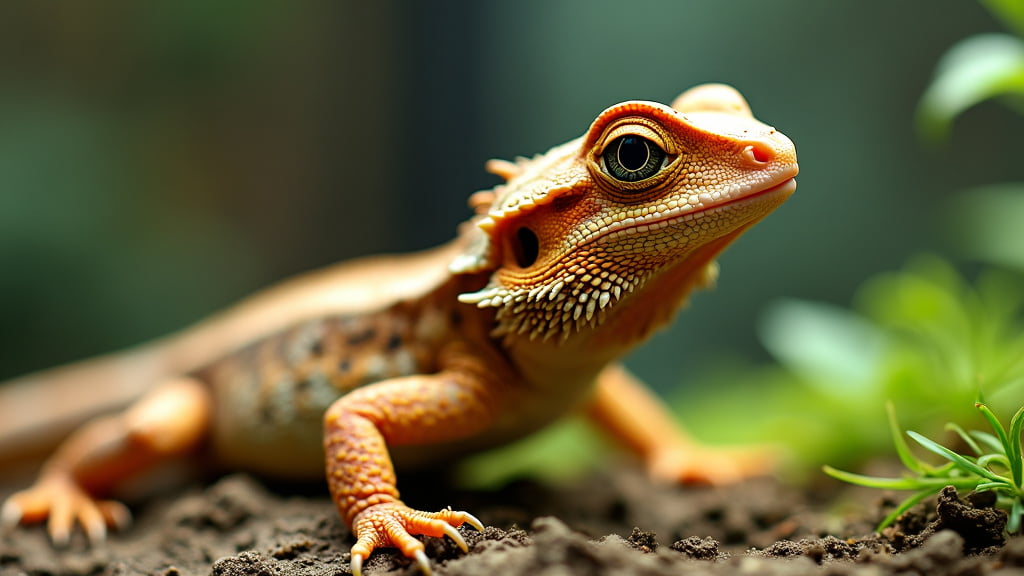The Ultimate Guide to Bearded Dragon Substrate Options and Setup
When it comes to setting up the perfect habitat for your bearded dragon, one of the most crucial elements to consider is the substrate. Having owned and cared for numerous bearded dragons over the years, I can tell you from personal experience that choosing the right substrate can make all the difference to their health and happiness. In this guide, we’ll explore the various substrate options available and how to set them up correctly to ensure your bearded dragon thrives.
Choosing the Right Substrate for Your Bearded Dragon
Selecting the appropriate substrate is vital not just for aesthetic appeal but for your pet’s overall well-being. Here, we’ll examine different substrate options, weighing their pros and cons, to help you make an informed decision.
Loose Particle Substrates
Loose particle substrates are quite popular amongst bearded dragon owners, but they come with their own set of challenges.
- Sand: While aesthetically pleasing and mimicking their natural environment, sand can pose a major risk of impaction if ingested. This can lead to critical health issues that require veterinary intervention. If you choose to use sand, opt for play sand and monitor your dragon closely.
- Reptile Carpet: This is a safer option that’s easy to clean and free from impaction risks. However, carpets must be washed regularly to avoid bacterial build-up.
- Wood Chips/Bark: Similar to sand, these can pose a risk of impaction and even injuries from sharp edges. They also tend to harbour bacteria and can be challenging to sanitise effectively.
Non-Particle Substrates
Non-particle substrates are generally considered safer and easier to manage.
- Newspaper & Paper Towels: Budget-friendly and safe, these are excellent for young dragons. The downside is they don’t provide a natural look and need frequent changing.
- Ceramic Tiles: Mimicking the natural basking rocks, ceramic tiles are easy to clean and maintain. They also help in wearing down your dragon’s nails naturally. Tiles can be a bit slippery for younger dragons, but adding texture can help.
- Vinyl or Linoleum Flooring: Both options are durable and straightforward to clean. They can be cut to fit the tank perfectly and provide a safe environment free from ingestion risks.
Setting Up Your Bearded Dragon’s Substrate
Once you’ve chosen the right substrate, the next step is to set it up correctly. A well-prepared habitat ensures your bearded dragon thrives in its new home.
Step-by-Step Guide
- Cleaning the Tank: Before setting up the substrate, ensure the tank is clean and disinfected. Use reptile-safe cleaning products to avoid harmful chemicals.
- Layering: If using loose particle substrates, ensure an even and deep enough layer to allow for natural digging behaviour. For non-particle substrates, secure them in place to prevent slipping or curling.
- Outdoor Decor: Add hiding spots, climbing branches, and basking rocks to simulate a natural environment. This not only enriches their habitat but also aids in thermoregulation.
- Regular Maintenance: Regular cleaning and substrate refreshes are crucial. Non-particle substrates can be spot-cleaned daily and fully replaced periodically, whereas loose substrates should be sifted for waste daily and replaced every few months.
Pros and Cons of Different Substrate Options
Not every substrate suits every bearded dragon, and what works for one may not work for another. Below, I’ll summarise the pros and cons to provide a clear picture of what to expect with each option.
Pros and Cons Overview
- Sand
- Pros: Natural look, affordable
- Cons: Risk of impaction, requires frequent cleaning
- Reptile Carpet
- Pros: Safe, reusable
- Cons: Regular washing needed, can hold bacteria
- Wood Chips/Bark
- Pros: Natural appearance
- Cons: Risk of impaction, difficult to sanitise
- Newspaper & Paper Towels
- Pros: Safe, cost-effective
- Cons: Unsightly, needs frequent changes
- Ceramic Tiles
- Pros: Easy to clean, aids in nail maintenance
- Cons: Can be slippery for younger dragons
- Vinyl or Linoleum Flooring
- Pros: Durable, easy to clean
- Cons: Requires cutting to size, not a natural look
Conclusion
Selecting the right substrate for your bearded dragon can feel overwhelming, but it’s crucial for their health and comfort. By weighing the pros and cons of different options and following proper setup and maintenance tips, you can create an ideal environment for your scaly friend. Whether you opt for the natural feel of sand or the easy maintenance of ceramic tiles, the key is regular upkeep and monitoring for any health issues.
For any concerns about your bearded dragon’s health or behaviour, always consult a qualified reptile veterinarian. Creating a happy and healthy habitat starts with informed choices and attentive care.
For more tips on bearded dragon care, check out our comprehensive care guide or visit trusted resources like Reptiles Magazine for expert advice.
If you found this guide helpful, don’t forget to share it with fellow bearded dragon enthusiasts!
Whether you’re a first-time bearded dragon owner or an experienced keeper, this tailored advice helps ensure your pet enjoys a long, healthy life. Keep experimenting, observing, and fine-tuning your approach—it’s all part of the rewarding journey of reptile ownership. Happy herping!

